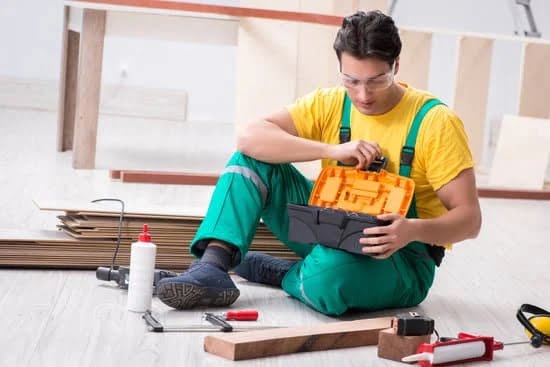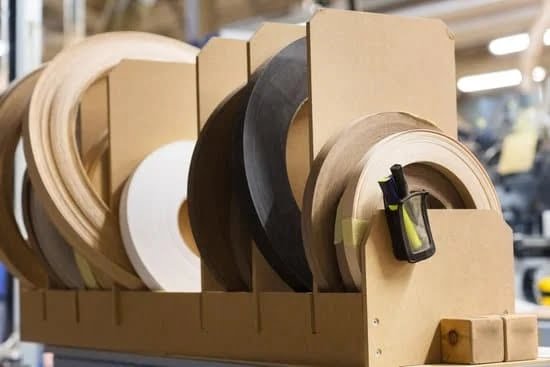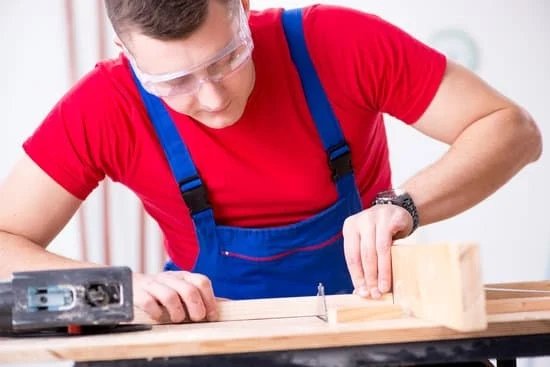What woodworking tools do I need in order to start practicing the art of woodworking? Whether you are a beginner or a seasoned woodworker, having the right tools is essential for creating quality wooden masterpieces. In this article, we will explore the basics of woodworking and delve into the essential tools needed to kickstart your woodworking journey.
Woodworking is a versatile and rewarding craft that allows individuals to create functional and aesthetic pieces using various techniques and tools. From shaping and joining wood to creating intricate designs, understanding the fundamentals of woodworking is crucial for achieving successful results. Additionally, having the right tools at your disposal can make all the difference in the efficiency and quality of your work.
In this section, we will discuss the must-have hand tools, power tools, measuring and marking tools, safety gear, specialty tools, as well as maintenance and sharpening techniques for woodworking tools. By gaining a comprehensive understanding of these fundamental aspects of woodworking, you will be better equipped to embark on woodworking projects with confidence. So, let’s dive into the world of woodworking and uncover the essential tools needed to bring your creative visions to life.
Hand Tools
When it comes to woodworking, having the right hand tools is essential for creating quality and precise woodwork. But what woodworking tools do I need to have in my workshop to get started? Let’s explore some must-have hand tools for woodworking.
Chisels are essential for carving and shaping wood, making them a fundamental tool in any woodworker’s arsenal. They come in various sizes and shapes, allowing for versatility in woodworking projects. Additionally, having a set of high-quality chisels can make all the difference in achieving clean and precise cuts.
Another indispensable hand tool for woodworking is the hand saw. Whether it’s a crosscut saw or a rip saw, these tools are crucial for cutting wood to size with accuracy. Hand saws also come in different tooth configurations, each serving specific purposes such as making fine cuts or rough cuts.
Lastly, planes are vital for smoothing and flattening wooden surfaces. A good quality plane allows woodworkers to refine their projects by removing imperfections and creating a smooth finish. Understanding how to use different types of planes effectively can greatly improve the overall quality of woodworking projects.
| Woodworking Hand Tool | Function |
|---|---|
| Chisels | Carving and shaping wood |
| Hand Saws | Cutting wood with accuracy |
| Planes | Smoothing and flattening wooden surfaces |
Power Tools
When it comes to woodworking, power tools play a crucial role in making the process more efficient and precise. Here are some of the essential power tools that every woodworker should have in their arsenal:
- Table Saw: A table saw is a fundamental tool for any woodworking shop. It is used for making straight cuts, ripping large sheets of plywood, and creating precise angles. With the right attachments, it can also be used for dado cutting and joinery.
- Power Drill: A power drill is another indispensable tool for woodworking. Whether it’s for drilling pilot holes, driving screws, or creating intricate designs with a drill press, this versatile tool is a must-have for any woodworker.
- Jigsaw: For curved cuts and intricate patterns, a jigsaw is an essential power tool. It allows woodworkers to create detailed designs and shapes that may not be achievable with other cutting tools.
These power tools not only make woodworking more efficient but also open up a world of possibilities when it comes to creating intricate designs and precise cuts.
Whether you’re just starting out or looking to expand your woodworking toolkit, investing in these essential power tools will undoubtedly take your craft to the next level. The versatility and precision they offer will allow you to tackle a wide range of projects with ease. So if you’ve ever asked yourself “what woodworking tools do I need,” these power tools are definitely at the top of the list.
Measuring and Marking Tools
When it comes to woodworking, precision is key to achieving professional-looking results. This is where measuring and marking tools play a crucial role in ensuring accuracy and precision in woodwork projects. Whether you are a beginner or an experienced woodworker, having the right measuring and marking tools is essential for creating precise cuts, joints, and overall craftsmanship.
Importance of Tape Measures
One of the most basic yet indispensable tools in woodworking is the tape measure. It allows woodworkers to accurately measure and mark the dimensions of the wood they are working on. Whether it’s determining the length of a board or taking precise measurements for joinery, having a reliable tape measure is essential for any woodworking project.
Utilizing Marking Gauges and Squares
Marking gauges are another essential tool for woodworking, used to create consistent and accurate markings on wood surfaces. They are particularly useful for creating parallel lines, marking mortises, or establishing consistent widths. Similarly, squares are crucial for ensuring that cuts and joints are perfectly perpendicular – a fundamental aspect of woodworking that greatly affects the quality of the finished piece.
Enhancing Precision With Measuring and Marking Tools
In woodworking, every millimeter counts. By utilizing measuring and marking tools effectively, woodworkers can enhance precision in their projects, resulting in seamless joinery, smooth edges, and flawless assemblies. Moreover, these tools also aid in reducing errors and minimizing material wastage by allowing woodworkers to make informed decisions based on accurate measurements.
Having a good understanding of how to use these measuring and marking tools not only improves the quality of your work but also enhances your efficiency as a woodworker. Remember – investing in high-quality measuring and marking tools is not just about accuracy; it’s about elevating your craftsmanship to new heights.
Safety Gear
When working with woodworking tools, prioritizing safety is essential to prevent accidents and injuries. Safety gear plays a crucial role in ensuring the well-being of woodworkers as they handle various tasks. Here are some of the necessary safety gear items that every woodworker should have in their arsenal:
- Safety Goggles: Protecting the eyes from wood splinters, flying debris, and dust is paramount while working on woodworking projects. Safety goggles provide a barrier between the eyes and potential hazards, preventing any eye-related injuries.
- Ear Protection: Woodworking tools can generate loud noises that may potentially damage hearing over time. Ear protection such as earmuffs or earplugs help mitigate the impact of these loud noises, safeguarding the woodworker’s hearing throughout their projects.
- Dust Masks: Woodworking often involves activities that produce fine wood particles and dust that can be harmful when inhaled. Dust masks or respirators act as a protective barrier for the woodworker’s respiratory system, reducing the risk of inhaling harmful particles.
Investing in high-quality safety gear not only ensures personal safety but also promotes a conducive and healthy working environment for woodworking enthusiasts. By incorporating these safety measures into their workflow, woodworkers can focus on honing their craft without compromising their well-being.
Remember that wearing safety goggles, ear protection, and dust masks is not optional but rather a crucial aspect of maintaining a safe workspace while pursuing woodworking projects. Taking proactive steps to protect oneself from potential hazards is an essential part of becoming a responsible and proficient woodworker.
In addition to having the right woodworking tools for various tasks, it’s equally important to prioritize safety by utilizing appropriate safety gear throughout all woodworking endeavors.
Specialty Tools
Routers
Routers are a versatile power tool that can be used for shaping, hollowing out, and creating intricate designs on wood. They come with different types of bits that allow for various cutting and shaping options. Routers are essential for creating decorative edges, joinery, and engraving on wooden surfaces. When considering what woodworking tools do I need, a router should definitely be on your list for advanced woodworking projects.
Spindle Sanders
Spindle sanders are specialized machines designed to sand curved or irregularly shaped wood. They have a cylindrical drum that spins at high speeds to efficiently sand concave and convex surfaces. Spindle sanders are ideal for smoothing out curves, rounding edges, and shaping intricate wooden pieces. These tools provide precision and consistency in sanding, making them crucial for achieving professional-quality finishes in advanced woodworking projects.
Lathe Machines
Lathe machines are used to shape wood by rotating it on its axis while cutting, sanding, drilling or deforming it with tools that are applied to the workpiece. This allows for the creation of symmetrical shapes such as table legs, bowls, vases, and even intricate wood carvings. Lathe machines require skill and experience to operate effectively but they open up a wide range of design possibilities in advanced woodworking projects.
When embarking on advanced woodworking projects, it’s important to consider adding these specialty tools to your collection along with the essential hand tools and power tools. Understanding how to use these specialty tools effectively will not only expand your capabilities as a woodworker but also enable you to take your projects to the next level of craftsmanship.
Maintenance and Sharpening
Woodworking tools are essential for any woodworker, but it’s not just about purchasing the right tools; it’s also crucial to maintain and sharpen them properly. Proper maintenance and sharpening techniques can prolong the lifespan of woodworking tools, ensuring that they remain efficient and safe to use.
One important aspect of tool maintenance is keeping the tools clean and free from any debris or sawdust buildup. This can be done by regularly wiping down the tools after use and storing them in a clean, dry place. Additionally, lubricating moving parts such as hinges or blades can help prevent rust and keep the tools functioning smoothly.
When it comes to sharpening woodworking tools, each type of tool requires a specific sharpening technique. For example, chisels and plane irons need to be sharpened using honing stones or sharpening jigs. On the other hand, saw blades require more specialized sharpening tools such as diamond files or circular saw blade sharpeners. Regularly inspecting the sharpness of your woodworking tools and sharpening them when necessary is crucial for maintaining their performance.
Ensuring that your woodworking tools are well-maintained and properly sharpened not only extends their lifespan but also improves the quality of your work. Dull or poorly maintained tools can be dangerous to use and result in subpar woodworking projects. Therefore, investing time in learning how to maintain and sharpen your woodworking tools is just as important as investing in the right tools themselves.
| Tool Maintenance | Sharpening Techniques |
|---|---|
| Regular cleaning | Honing stones for chisels and plane irons |
| Lubrication of moving parts | Diamond files for saw blades |
| Proper storage | Regular inspection for sharpness |
Conclusion
In conclusion, understanding the essential woodworking tools is vital for anyone looking to start or improve their woodworking skills. Hand tools such as chisels, hand saws, and planes are fundamental for precise and detailed work, while power tools like table saws, power drills, and jigsaws add efficiency and versatility to woodworking projects. Measuring and marking tools, safety gear, specialty tools, and maintenance techniques are all crucial aspects that cannot be overlooked when working with wood.
It’s important to remember that investing in quality tools can make a significant difference in the outcome of your projects. While it may seem daunting to figure out what woodworking tools you need as a beginner or hobbyist, taking the time to research and understand their uses will ultimately benefit your craftsmanship in the long run.
Additional resources such as online tutorials, woodworking forums, and classes can provide valuable insight into choosing the right tools for your specific needs and skill level.
As you embark on your woodworking journey, always prioritize safety by wearing appropriate gear and following proper techniques when using your tools. Keeping them well-maintained and sharpened will not only prolong their lifespan but also ensure smooth operations for future projects. Remember that learning about woodworking tools is an ongoing process – embrace it as part of your passion for crafting with wood.
Frequently Asked Questions
What Is the Most Essential Woodworking Tools?
The most essential woodworking tools vary depending on the type of woodworking projects you’ll be doing, but a few basic ones are a quality saw, a chisel set, a hammer, measuring tools like a tape measure and combination square, and some form of marking tool.
What Tool Does Every Carpenter Need?
Every carpenter needs a reliable and versatile power drill in their toolkit. A good power drill is essential for drilling holes and driving screws, making it a must-have for any carpentry project.
What Do You Need to Start Woodworking?
To start woodworking, you’ll need some basic tools and equipment such as saws (like a circular saw or handsaw), measuring and marking tools, clamps, sandpaper, safety equipment like goggles and hearing protection, and of course, wood to work with. Additionally, having access to a well-ventilated workspace will be crucial for your woodworking endeavors.

Hi everyone! I’m a woodworker and blogger, and this is my woodworking blog. In my blog, I share tips and tricks for woodworkers of all skill levels, as well as project ideas that you can try yourself.





